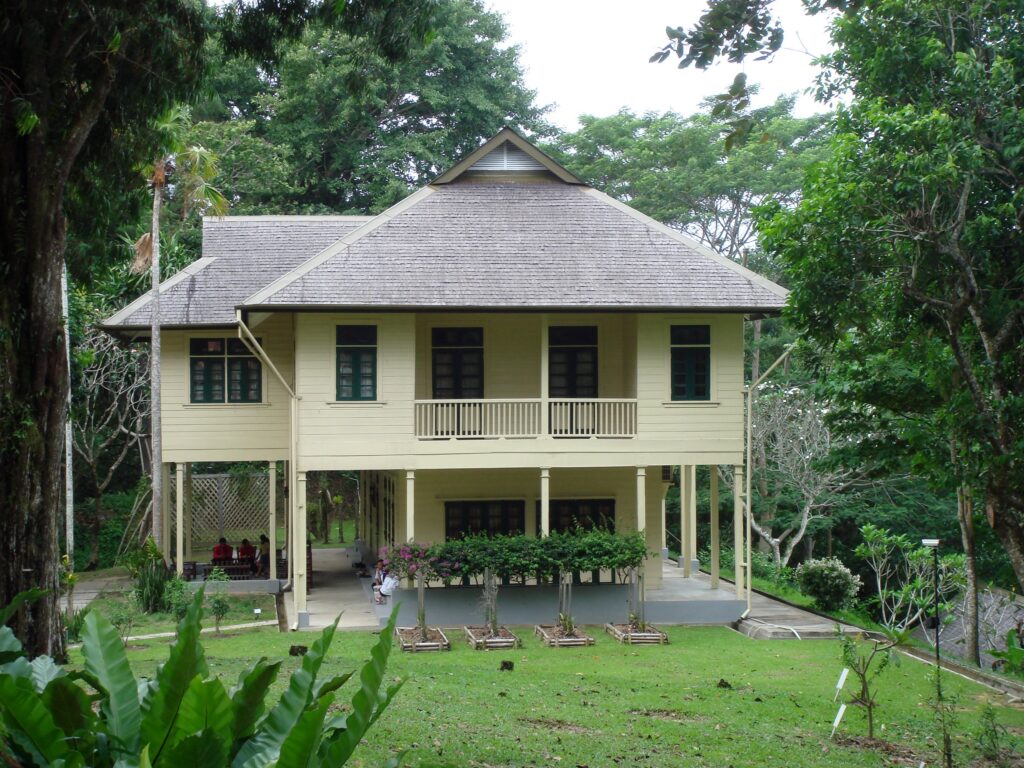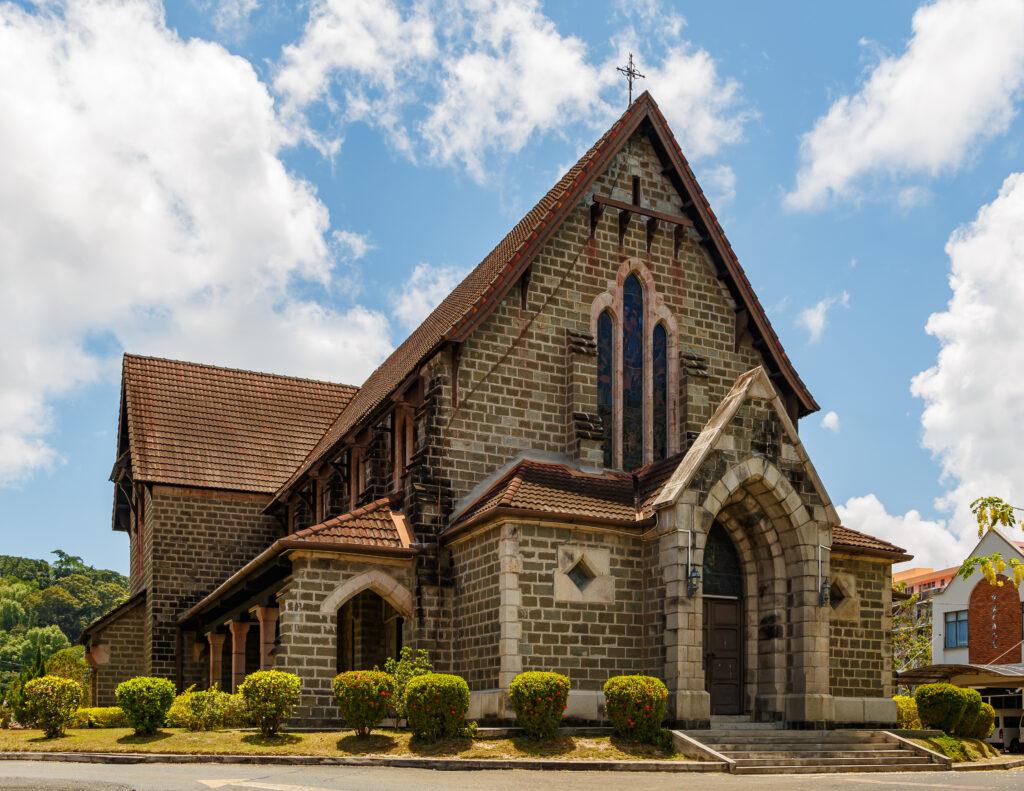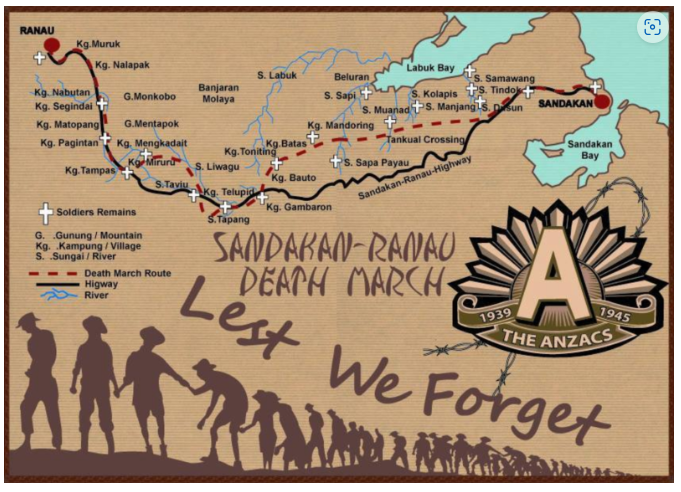And they told him, “We came to the land to which you sent us. It flows with milk and honey, and this is its fruit.”
Numbers 13:27 (ESV)
“Six-degrees north of the Equator, in the heart of the East Indies, lies Sandakan, the tiny capital of British North Borneo. In Sandakan in 1941, there were 15 thousand Asiatics, 79 Europeans, and 1 American. I was the American. My name is Agnes Keith. I was born in Oak Park, Illinois, and graduated from the University of California at Berkeley. My husband is Harry Keith, a colonial official of British North Borneo. Borneo became my home when Harry and I were married. And it was in Sandakan that I bore one child, and lost another. And it was in Sandakan that we waited – 45 white men, 24 wives, and 11 children – through the anxious days of 1940 and ’41. Certain only of one thing: that sooner or later, Japanese guns would join in the thunders of war, and Japanese troops would come down through the East Indies. The men waited because it was their duty; the women because it was their choice.”
Agnes Newton Keith (Source: IMDB. Three Came Home 1950 movie.)
Sandakan in 1941

Sandakan Bay today

1.0 Physical Geography
Sandakan, situated in the Sandakan District, serves as the district’s capital and is the second-largest city in Sabah. Covering an area of 2,262 km2, it slightly surpasses the size of Moscow City.
Population:
As of 2020, the population of Sandakan was recorded at 439,050 residents.
Maritime Location:
Positioned on the east coast, Sandakan faces the Sulu Sea, providing direct access to the Pacific Ocean.
Distance:
Sandakan’s distances to key cities in Sabah are as follows:
| City | Distance from Sandakan |
| Kota Kinabalu | 226 km |
| Lahad Datuk | 96 km |
| Tawau | 181 km |
| Kudak | 180 km |
Historical Significance:
Serving as the capital of North Borneo from 1884 to 1946, Sandakan holds a unique historical charm. It has been featured prominently in three movies and over a dozen novels, including “Sandokan,” a fictional character from Borneo, and “Sandakan No. 8,” a Japanese film. Notably, Agnes Keith, an American author residing in Sandakan, wrote “Land Below The Wind” here, coining a term now used to describe North Borneo.
War Legacy:
The infamous Sandakan Death March, a tragic episode in World War II, witnessed the forced march of Allied prisoners of war, resulting in the death of 2,434 individuals in the Sandakan POW camp. Only six Australians managed to escape and survive.
Tropical Climate:
Located at 5.8° north of the equator, Sandakan experiences a tropical climate with an annual rainfall of 3,010 mm and an average temperature of 27°C.
Distinct Features:
- In the 1950s-60s, Sandakan earned the nickname “Little Hong Kong” due to a significant influx of migrants from Hong Kong, and Cantonese remains a common dialect among the Sandakan Chinese.
- Early Hakka Chinese settlers, refugees from the Taiping Rebellion, landed in Kudat and later moved to Sandakan. They maintained their surnames, Fung and Yong, and were skilled in Chinese martial arts.
- St Michael’s Church, constructed in 1893, stands as the oldest stone church in Sabah, featuring stained glass windows donated by Australians.
- The Sandakan Jamek Mosque, inaugurated in 1890, holds the distinction of being the oldest mosque in Sandakan.
- Tobacco cultivation began in 1883 near Sandakan, and the China Sabah Land farming Company, a Chinese-European joint venture, gained acclaim for producing high-quality tobacco.
- In the 1930s, Sandakan became the world’s largest exporter of hardwood, contributing timber logs used in constructing the Temple of Heaven in Beijing.
- Home to the orangutan sanctuary, Sandakan’s Gomantong cave was historically known for providing bird’s nests to Empress Dowager Cixi during the Ching Dynasty.
Unique Attributes:
- Sandakan is a popular tourist destination and serves as the gateway to the Orangutan Sanctuary.
- It plays a crucial role as a palm oil hub, benefitting from abundant sunshine and rainfall.
- Sandakan’s strategic location provides access to the Celebes Sea and the Pacific Ocean.
2.0 History Timeline
| Period | Ruling Entity |
| Bruneian Empire | 15th century – 1658 |
| Sultanate of Sulu | 1658 – 1882 |
| British North Borneo Co | Established in 1879 |
| Capital of North Borneo | 1884 – 1946 |
| Federation of Malaysia | Joined in 1963 |
Also Known As (AKA): Little Hong Kong
Unique Attributes:
- Former Capital of North Borneo, boasting well-established plantations of successful crops including tobacco, timber, cocoa, and oil palm.
3.0 Economy Overview
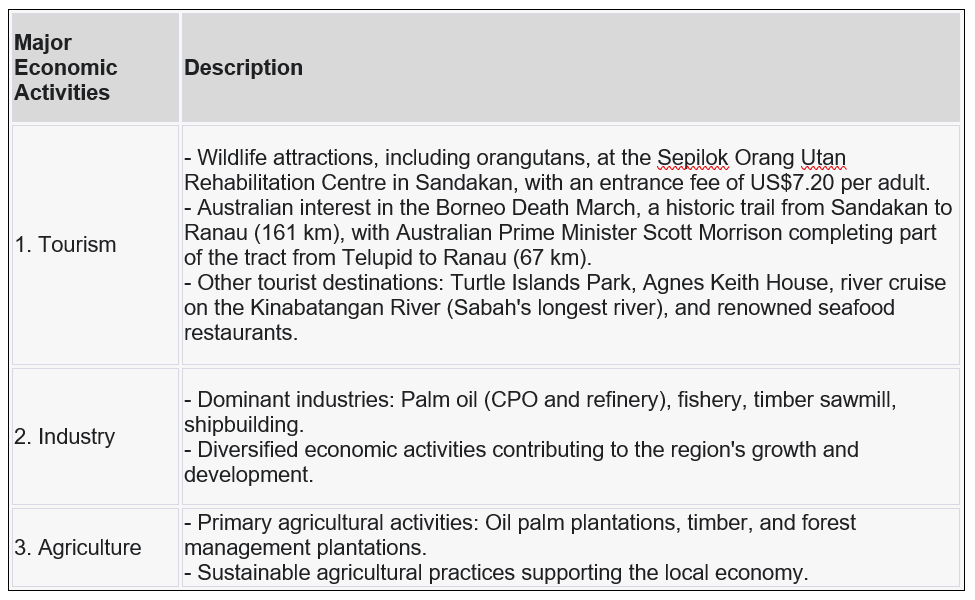
Unique Attributes:
- Tourism Focus: Sandakan’s tourism emphasizes wildlife attractions, historical significance, and natural wonders, with opportunities for cultural experiences and adventure tourism.
- Industrial Diversity: The region’s economic landscape is diversified, featuring key industries such as palm oil, fishery, timber, and shipbuilding.
- Agricultural Opportunities: Opportunities for the development of fisheries, oil palm plantations, and downstream processing present avenues for economic growth and investment.
4.0 Language Overview
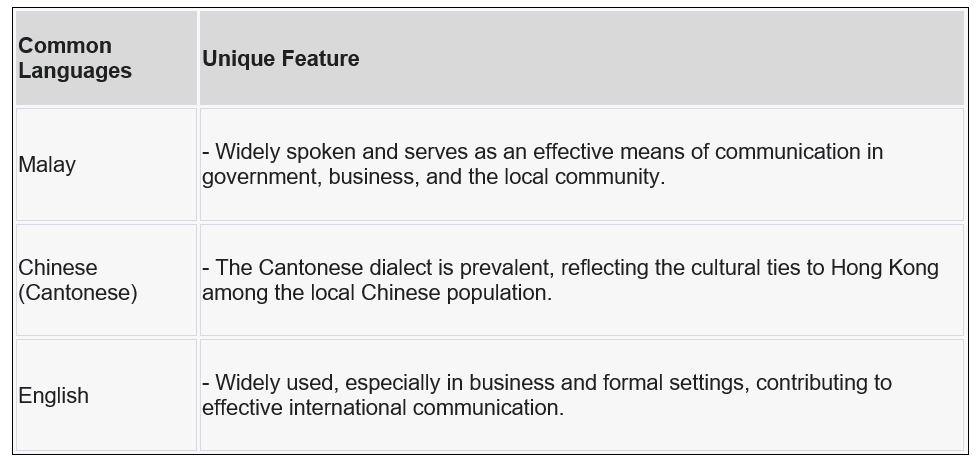
Unique Feature:
- Effective Communication: The prevalence of the Malay language facilitates effective communication across various domains, including government, business, and the local community, fostering cohesion and understanding in Sandakan.
5.0 Investment Opportunities Overview
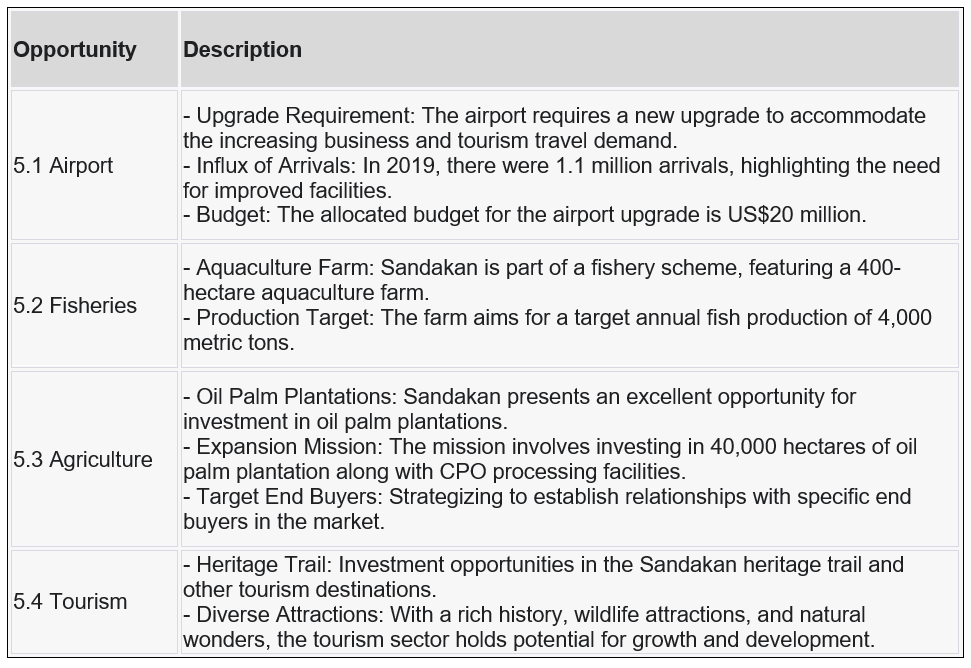
Unique Features
These investment opportunities span crucial sectors such as infrastructure, fisheries, agriculture, and tourism, contributing to the overall economic development of Sandakan.
5.5 Private Equity funds, investors and consultants (Additional PE groups and consultants are listed in other chapters)
Agriculture:
Airport:
- Fraport
- Groupe ADP
- Morgan Stanley Infrastructure Partners
- Utilico Emerging Markets
- Vinci Concessions
Fishery:
- Altor
- Amerra Capital
- JLEN Environmental Assets Group
- Katapult Ocean
- The Meloy Fund
Tourism:
- Apollo Global Management
- Bain Capital
- Blackstone
- Fortress Investment Group
- KKR
- Montefiore Investment
